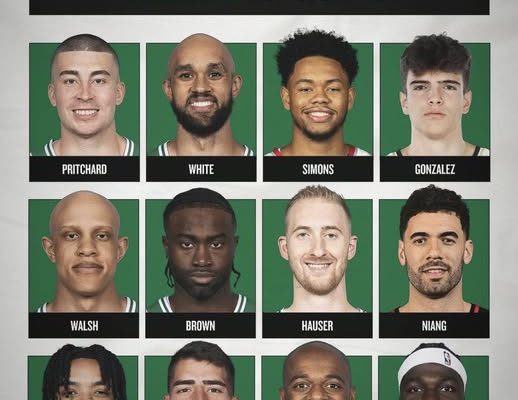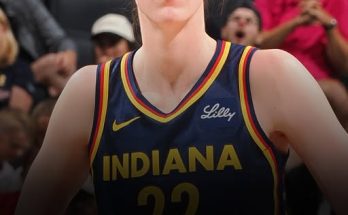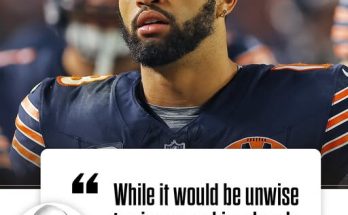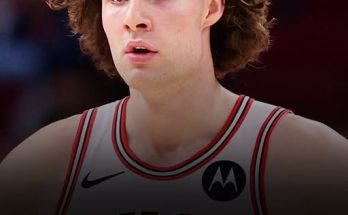The confetti has barely settled from the Boston Celtics’ triumphant 2024 NBA Championship run, yet the whispers of “what’s next?” are already echoing through the hallowed halls of TD Garden and across the league. A revamped roster, a fresh wave of championship aspirations – it all points to another intriguing season for the boys in green. The bold predictions are already rolling in, with some analysts pegging them at a staggering 55 victories for the upcoming campaign. But is this an optimistic fantasy, a reasonable projection, or perhaps even an underestimate? To truly dissect this, we need to delve deep into the labyrinthine world of NBA team building, the nuances of player development, the ever-present specter of injuries, and the unpredictable nature of an 82-game regular season.
Let’s start by acknowledging the elephant in the room: Jayson Tatum’s Achilles injury. While early reports suggested he’d be out until at least April 1st, this is a significant blow, no matter how optimistic the recovery timeline. Losing your undisputed superstar and offensive engine for a substantial portion of the regular season fundamentally alters the team’s dynamics and, more importantly, its win projection. This isn’t merely about replacing his scoring; it’s about the gravity he commands, the playmaking he initiates, and the defensive versatility he provides. A team built around a cornerstone like Tatum has to adapt dramatically when that cornerstone is temporarily removed.
However, the Celtics’ front office, under the astute leadership of Brad Stevens, has clearly been proactive in addressing this challenge, alongside navigating the complexities of the second apron of the luxury tax. The recent transactions have painted a clear picture of their strategy. Trading away Jrue Holiday and Kristaps Porzingis, two pivotal pieces of their championship puzzle, might seem counterintuitive at first glance, especially given their immense contributions to the title run. Yet, the returns, particularly Anfernee Simons from Portland and Georges Niang from Atlanta, alongside the signing of Luka Garza and Josh Minott, suggest a multifaceted approach.
Simons, acquired in the Holiday deal, brings a much-needed injection of offensive firepower and shot creation, particularly crucial in Tatum’s absence. He’s a dynamic guard who can score in a variety of ways, capable of shouldering a significant portion of the offensive load. The question, however, revolves around his fit within the Celtics’ defensive scheme, which has been a hallmark of their success. Holiday was a defensive stalwart, a true two-way guard who could lock down opposing ball-handlers. Simons, while improving, isn’t quite in that same echelon. His expiring contract also raises questions about his long-term future in Boston, potentially making him a trade chip down the line if the team needs to further shed salary to avoid repeater tax penalties.
The trade involving Kristaps Porzingis, which brought in Georges Niang, is another intriguing move. Porzingis, when healthy, offered a unique blend of shooting, rim protection, and post-up scoring that stretched defenses and provided a valuable offensive wrinkle. His injury history, however, has been a persistent concern. Niang, on the other hand, is a stretch-four who can space the floor, but he doesn’t offer the same defensive versatility or interior presence. This move seems to prioritize financial flexibility and potentially a different offensive rhythm, perhaps leaning more into a collective scoring effort rather than relying on Porzingis’s individual brilliance. The addition of Luka Garza and Josh Minott, both on minimum deals, indicates a focus on bolstering frontcourt depth, likely with an eye on development and finding complementary pieces. Garza, a skilled big man, could provide scoring punch off the bench, while Minott offers defensive upside and athleticism.
Beyond these new acquisitions, the core of Jaylen Brown and Derrick White remains intact, and their roles will be magnified. Jaylen Brown, coming off an NBA Finals MVP performance, will undoubtedly be asked to carry an even heavier offensive burden, especially with Tatum sidelined. His continued growth as a primary playmaker and scorer will be paramount to the team’s success. Derrick White, the quintessential glue guy, will continue to be vital with his tenacious defense, timely shooting, and intelligent decision-making. His ability to facilitate offense and guard multiple positions will be stretched even further. The veteran presence of Al Horford, even at 39, remains invaluable, providing leadership, defensive IQ, and clutch moments. His minutes will likely be managed carefully, highlighting the importance of developing younger bigs like Garza and Neemias Queta. Payton Pritchard, another key returning piece, will see an increased role in the backcourt, particularly as a spark plug off the bench and potentially even a spot starter, providing consistent shooting and hustle. His development into a double-figure scorer, as some bold predictions suggest, would be a significant boost.
Now, let’s turn our attention to the audacious prediction of 55 wins. To understand if this is feasible, we must consider several critical factors that influence an NBA team’s regular-season performance.
Firstly, team chemistry and continuity. While the Celtics have revamped their roster, they still retain a strong core that has played together for several seasons. The championship experience and the collective understanding of Coach Joe Mazzulla’s system will undoubtedly aid in integrating the new pieces. However, the loss of integral players like Holiday and Porzingis, both of whom had significant roles in establishing the team’s identity, presents a challenge to continuity. The new players, Simons and Niang, will need time to adapt to the Celtics’ defensive principles and offensive flow. Building chemistry takes time, and early-season struggles are not uncommon for teams undergoing significant roster changes.
Secondly, player health and availability. This is perhaps the most unpredictable, yet impactful, factor. Jayson Tatum’s Achilles injury is a glaring example. Even if he returns by April 1st, there’s a period of ramp-up and regaining game fitness. Other key players like Jaylen Brown and Derrick White have also dealt with their share of nicks and bruises throughout their careers. The NBA regular season is a grueling marathon, and managing player loads, preventing injuries, and ensuring key players are fresh for the playoffs are paramount. The depth additions, while not marquee names, become even more crucial in this context. If players like Minott and Garza can provide reliable minutes, it lessens the burden on the starters.
Thirdly, the strength of the Eastern Conference. While the Celtics were the clear dominant force last season, the Eastern Conference is not without its contenders. Teams like the New York Knicks, Cleveland Cavaliers, and even potentially a revitalized Atlanta Hawks or Milwaukee Bucks, will be vying for top spots. The Knicks, in particular, appear to be a formidable opponent, with some analysts even predicting them to finish at the top of the conference. The competitive landscape means that every win will be hard-fought, and there are fewer “easy” games on the schedule. The Celtics’ ability to maintain their defensive intensity and offensive efficiency against a strong slate of opponents will be critical.
Fourthly, coaching and tactical adjustments. Joe Mazzulla, fresh off a championship, has proven his ability to lead and adapt. However, he will face new challenges with a somewhat altered roster and the absence of Tatum for a significant period. His ability to integrate Simons and Niang, maximize the strengths of the remaining core, and devise effective strategies to compensate for Tatum’s absence will be under intense scrutiny. The team’s defensive scheme, which was stifling at times last season, will need to evolve to accommodate the new personnel. Offensively, the fluidity and ball movement that characterized their best performances will be crucial.
Fifthly, the impact of the new additions. Anfernee Simons, as mentioned, is a potent scorer. If he can consistently contribute 20+ points and show improved decision-making, he will be an undeniable asset. However, his defensive commitment and ability to navigate screens will be key. Georges Niang’s shooting can open up the floor, but his defensive limitations could be exploited. The development of draft picks like Hugo Gonzalez and Amari Williams, while not expected to be immediate impact players, could provide unexpected depth later in the season. The overall success of the “revamped roster” hinges on whether these new pieces can not only fill the void left by departures but also elevate their own games within the Celtics’ system.
Considering all these factors, is 55 wins a realistic target? The Celtics achieved 64 wins last season, demonstrating their immense talent and consistency. However, a significant portion of that success was built on the collective strength of their starting five, a unit that will be altered in the upcoming season.
Let’s break down the implications of Tatum’s injury more granularly. If he’s out until April 1st, that’s roughly 60-70 games, depending on the exact start date of the season. Even if the Celtics manage to play .500 basketball without him, that still puts them in a significant hole. To reach 55 wins, they would need to have an exceptionally strong record with him in the lineup, which would be a tall order given the limited time. More realistically, they would need other players to step up in a way that truly transcends expectations.
Could Jaylen Brown ascend to an MVP-level player and carry the team for an extended period? It’s possible, but it’s a monumental ask. Can Simons, White, and the rest of the supporting cast collectively compensate for Tatum’s absence without a noticeable drop-off? That’s a much harder proposition. While the Celtics have emphasized a “next man up” mentality and possess a deep roster, the sheer volume of talent and versatility lost with Tatum’s injury cannot be overstated.
Furthermore, the league has a way of adjusting to defending champions. Opposing teams will undoubtedly come prepared with new strategies and increased intensity when facing the Celtics. The target on their back will be bigger than ever.
My take: 55 victories, while a tantalizing number, feels overly optimistic given the current landscape and, most crucially, Jayson Tatum’s injury.
Here’s why:
- Tatum’s absence is a significant anchor: Even the most resilient teams struggle without their bona fide superstar for an extended period. His offensive creation, defensive impact, and clutch play are incredibly difficult to replicate by committee. While other players will certainly step up, expecting them to entirely fill that void for half a season or more is a stretch.
- Chemistry takes time: Integrating Anfernee Simons and Georges Niang into an established championship system, especially with core players out, will require an adjustment period. There will be nights where communication on defense falters, or offensive rhythm is elusive.
- The Eastern Conference is competitive: While the Celtics were dominant, the Knicks and Cavaliers are strong, and other teams could emerge. No team gets a free pass in the NBA, and maintaining a high win percentage against a competitive schedule is challenging.
- Defensive question marks: While Derrick White and Jaylen Brown are excellent defenders, the collective defensive identity that was established with Holiday and Porzingis will need to be re-evaluated and reinforced. Simons and Niang are not known for their defensive prowess, and this could lead to some regression on that end.
However, the Celtics are still an incredibly talented and well-coached team. They have a championship pedigree, a hungry core, and a front office committed to winning. They also have a deep bench with players capable of stepping up when given the opportunity. The culture of winning instilled by Brad Stevens and Joe Mazzulla is a powerful asset.
So, what’s a more realistic prediction?
I believe a more pragmatic prediction for the Boston Celtics next season, with a revamped roster and renewed championship aspirations, would fall in the range of 48-52 wins.
Here’s the rationale behind this revised projection:
- Initial Adjustment Period (roughly 15-20 games): The first month or so of the season will be crucial for the new-look Celtics. They’ll need to establish new offensive pecking orders, defensive rotations, and overall team rhythm without Tatum. This period is likely to see them hovering around a .500 record, perhaps slightly above. This would mean approximately 8-12 wins in that initial stretch.
- Mid-Season Grind and Adaptation (roughly 40-45 games): As the season progresses, the new players will become more familiar with the system and their teammates. Jaylen Brown will likely elevate his game, and Derrick White will continue to be a rock. Anfernee Simons will have settled into his role, and the development of players like Payton Pritchard, Luka Garza, and Josh Minott will become more apparent. During this phase, I anticipate the Celtics will find their stride, playing at a winning clip, perhaps around a 60-65% win rate. This could translate to 24-29 wins during this stretch.
- Tatum’s Return and Playoff Push (roughly 15-20 games): Assuming Jayson Tatum returns around April 1st, the final stretch of the season will see the Celtics reincorporate their superstar. There might be a brief period of adjustment as Tatum regains his rhythm and the team re-learns how to play with him as the primary option. However, his return will undoubtedly provide a significant boost, and the team will be eager to build momentum heading into the playoffs. A strong finish, perhaps winning 70-75% of their games in this period, could add another 10-15 wins.
Breaking it down further:
Let’s consider a hypothetical scenario:
- Without Tatum (first ~60 games): Even with Jaylen Brown stepping up, and Simons providing scoring, maintaining a truly elite record without their primary offensive engine and defensive anchor is incredibly challenging. If they manage a 0.550 winning percentage in this period, that’s approximately 33 wins. This might seem low for a championship team, but the impact of losing a player like Tatum for such an extended period is immense.
- With Tatum (final ~22 games): Once Tatum returns and gets back into form, the Celtics should revert to being one of the league’s elite teams. If they play at a 0.700 winning percentage in the final stretch, that would be roughly 15 wins.
Adding these two phases together: 33 wins (without Tatum) + 15 wins (with Tatum) = 48 wins.
Now, if we lean towards the more optimistic side of that range:
- Without Tatum (first ~60 games): A more optimistic view might see them maintaining a 0.600 winning percentage, which is still a very strong mark, equating to 36 wins. This would require exceptional performances from Brown, White, and Simons, along with consistent contributions from the role players.
- With Tatum (final ~22 games): If Tatum returns seamlessly and the team clicks immediately, they could push their winning percentage closer to 0.750, adding 16-17 wins.
Adding these: 36 wins + 16-17 wins = 52-53 wins.
Therefore, the 48-52 win range seems to capture the inherent challenges of Tatum’s injury, the roster adjustments, and the competitive nature of the league, while still acknowledging the immense talent and championship experience that remains on the Celtics roster.
The 55-win projection, while bold and certainly capturing the renewed championship aspirations, might be slightly ambitious. It would require nearly everything to go right: quick assimilation of new players, a faster-than-expected recovery and immediate impact from Tatum, minimal other injuries, and consistent top-tier performance from Jaylen Brown and Derrick White. While the Celtics have proven their resilience and ability to overcome adversity, the cumulative effect of these factors leans towards a slightly lower, though still highly successful, win total.
Ultimately, the beauty of the NBA season lies in its unpredictability. The Celtics are a team that will undoubtedly be in the championship conversation, regardless of their regular-season win total. The goal is to be peaking at the right time, healthy and cohesive, when the playoffs roll around. A 48-52 win season would still comfortably position them as a top-tier team in the Eastern Conference, allowing them to secure a favorable playoff seed and embark on another deep postseason run. The journey to the next banner is never linear, and the 2025-2026 season for the Boston Celtics promises to be a captivating one, filled with twists, turns, and perhaps, another shot at glory.



